Abstract
Synaptic vesicles containing radioactive acetylcholine have been isolated from slices of Torpedo electric organ incubated with radioactive choline. The recently synthesized radioactive acetylcholine is preferentially removed from the vesicles by iso-osmotic gel filtration. There is therefore a small compartment of loosely bound recently synthesized acetylcholine within the monodisperse vesicle fraction. The specific radioactivity of this compartment correlates most closely with the `free' acetylcholine of electric organ that is lost when the tissue is homogenized. Membrane-associated vesicles did not contain any particular enrichment of this compartment. On standing at 6°C the loosely bound compartment stabilizes so that it survives iso-osmotic filtration. A study of this phenomenon revealed that it was proportional to the extent of the loss of tightly bound acetylcholine from the vesicles. Incubation with Ca2+, at pH5.5, or partial hypo-osmotic shock, caused losses of tightly bound acetylcholine and proportional increases in the stabilization of loosely bound acetylcholine of vesicles. Incubation at 20°C caused less loss of tightly bound, and less stabilization of loosely bound, acetylcholine. A theoretical treatment of these exchanges also shows that the random factors promoting loss of tightly bound acetylcholine are statistically correlated with those which cause stabilization of loosely bound acetylcholine. The reciprocal relationship between the exchanges is inconsistent with there being two distinct populations of vesicles, one containing recently synthesized, loosely bound acetylcholine and the other containing tightly bound acetylcholine. It is proposed that all the vesicles contain a core of tightly bound acetylcholine and a surface layer of loosely bound acetylcholine. The origin of the extravesicular acetylcholine and also of the acetylcholine released on stimulation is discussed in the light of these results.
Full text
PDF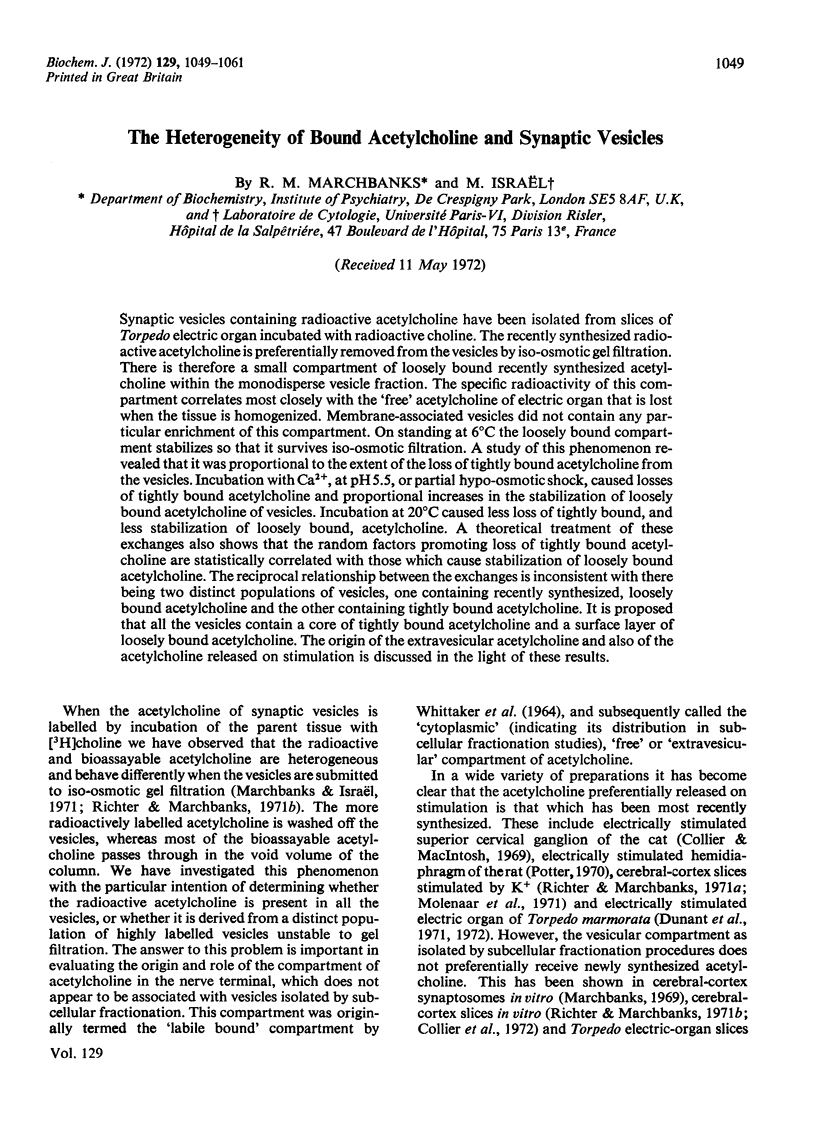
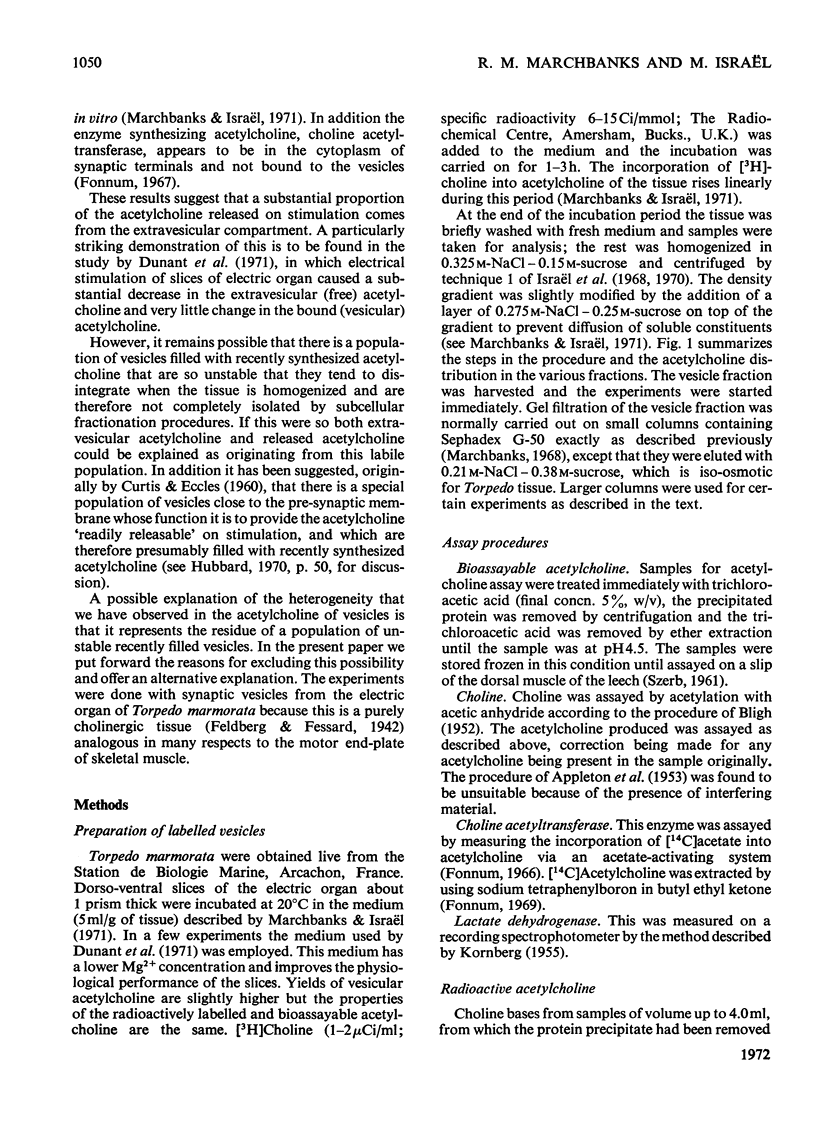
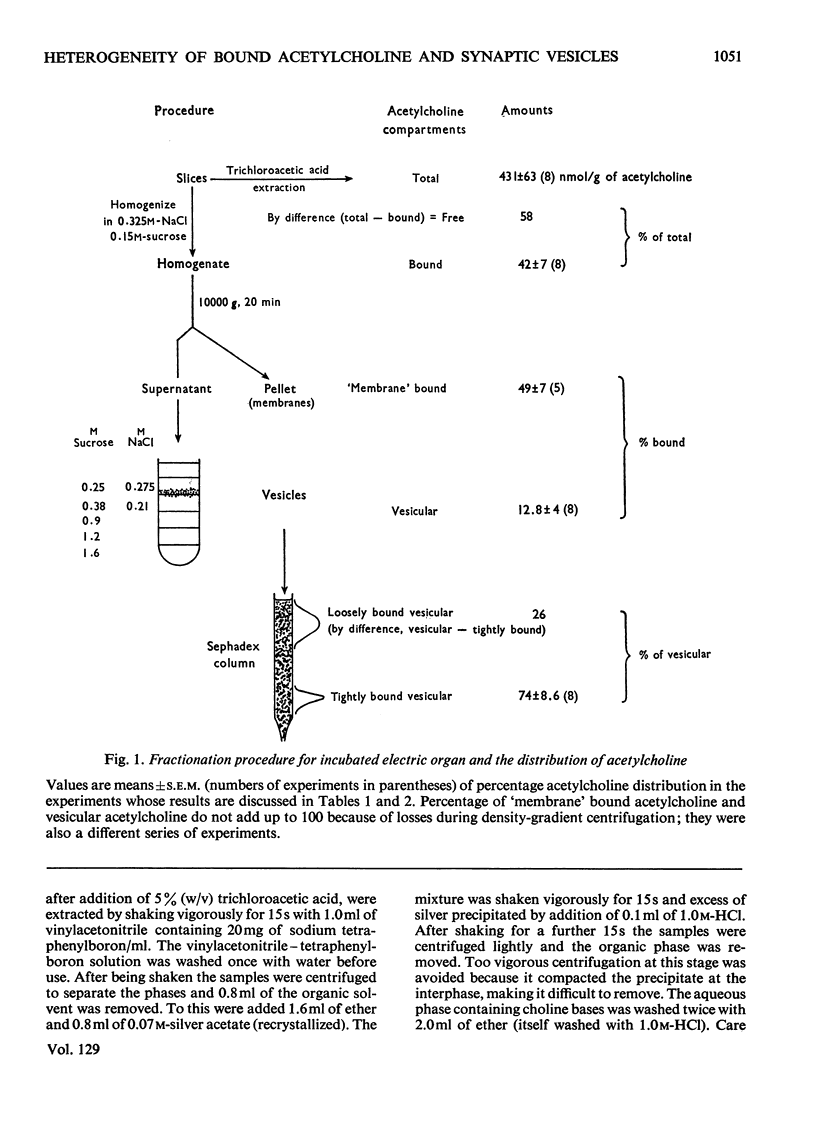
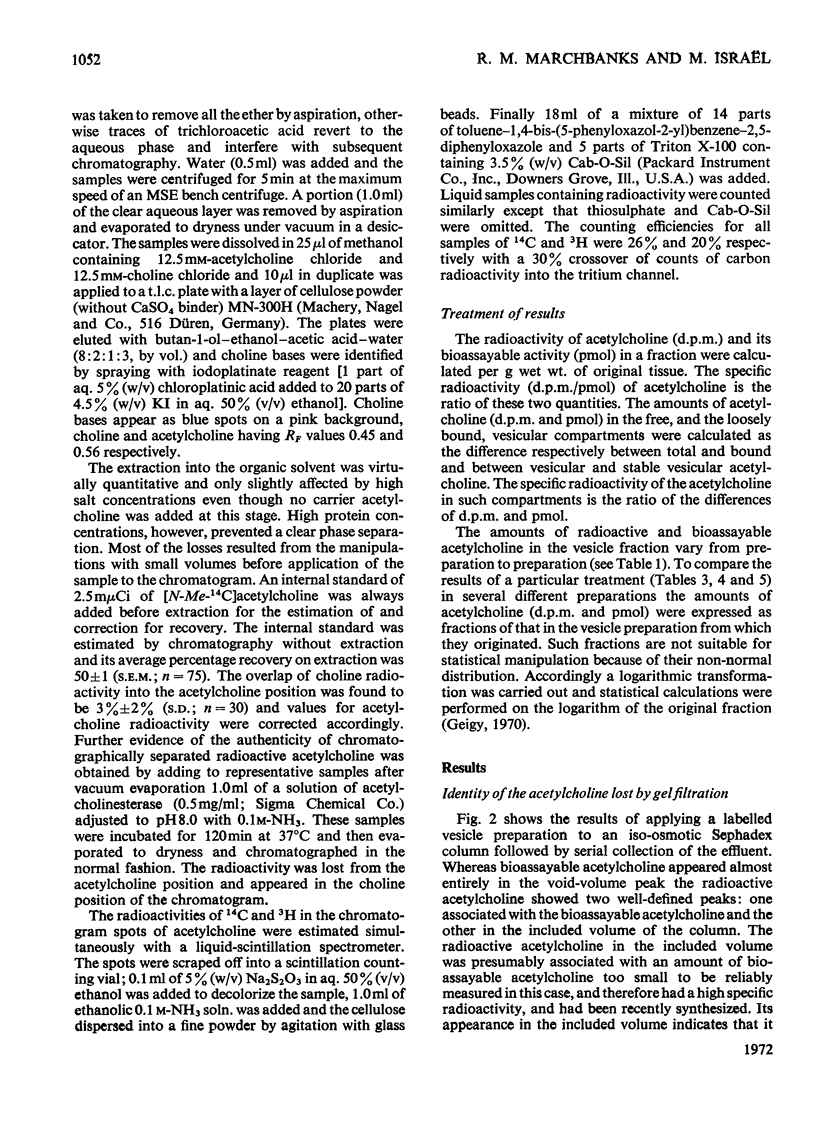
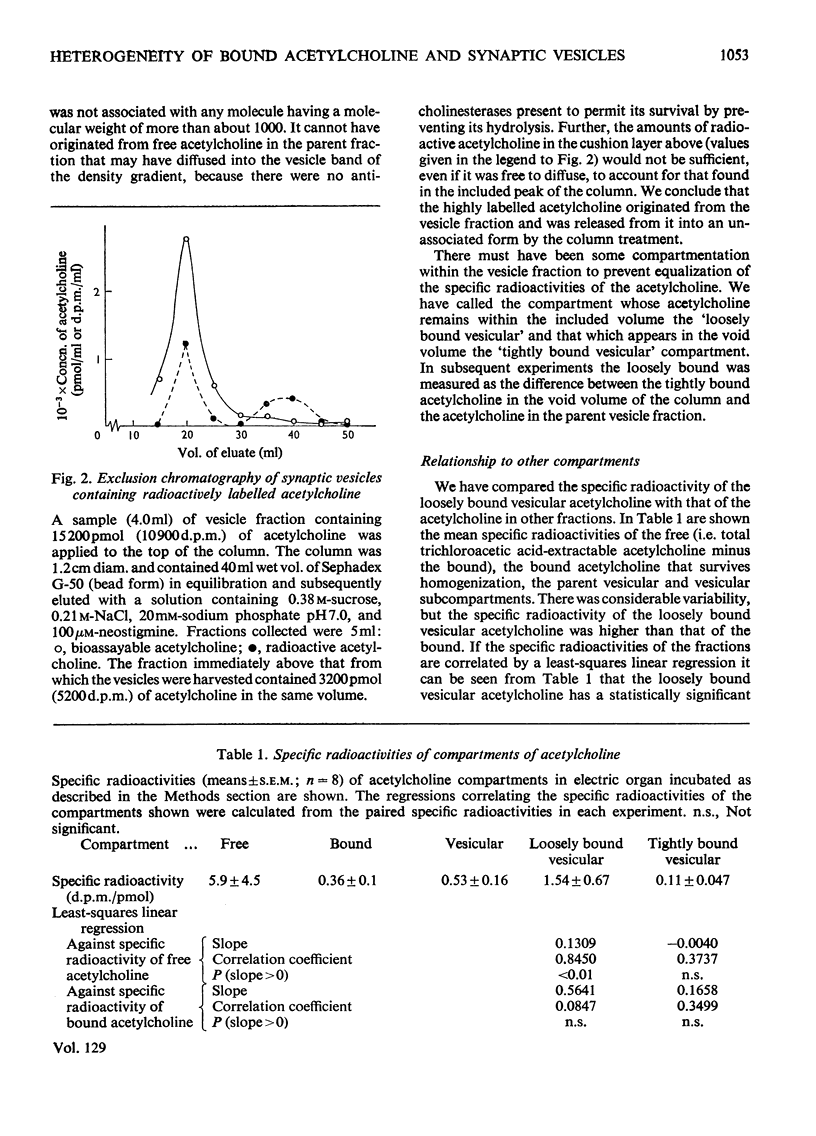
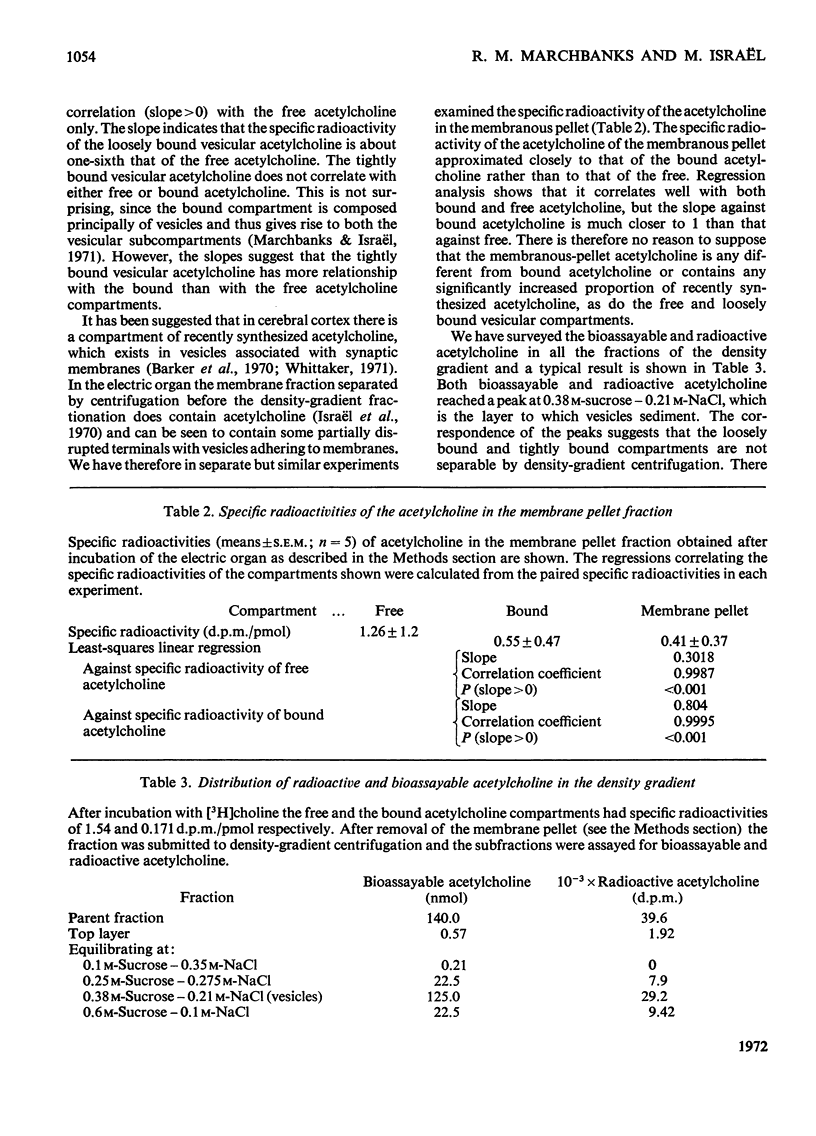
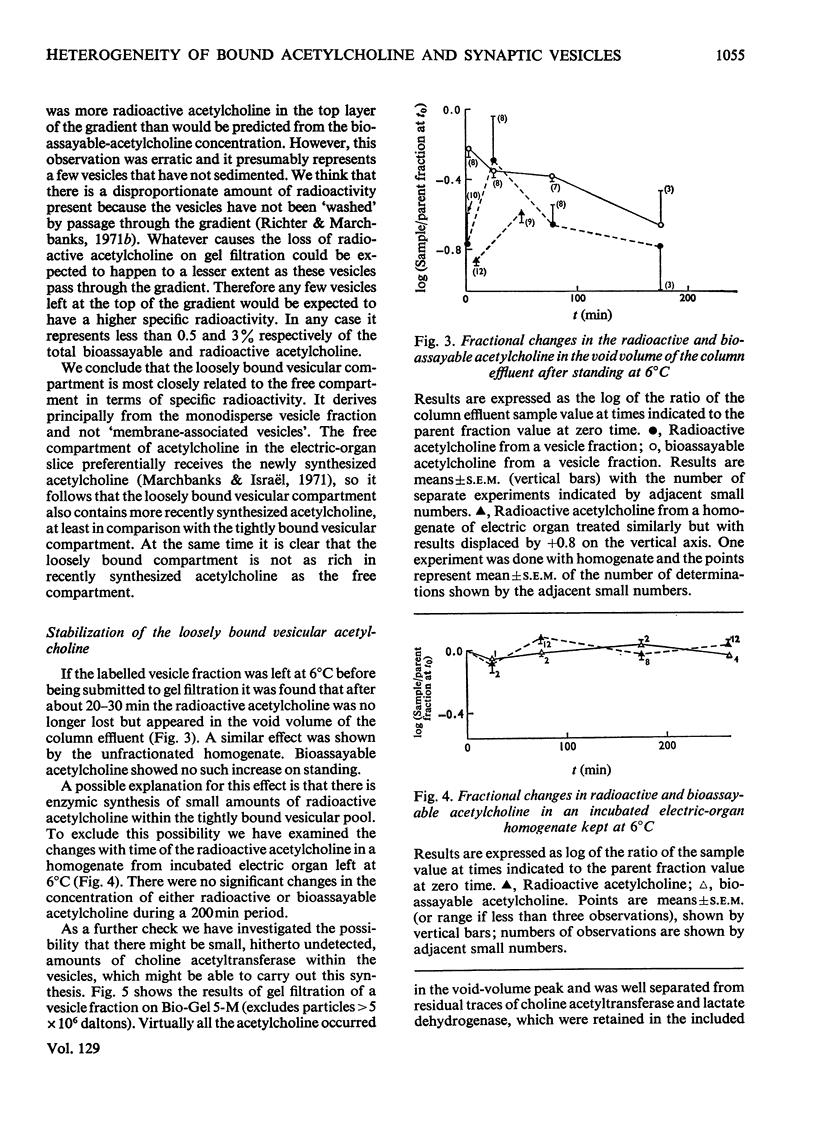
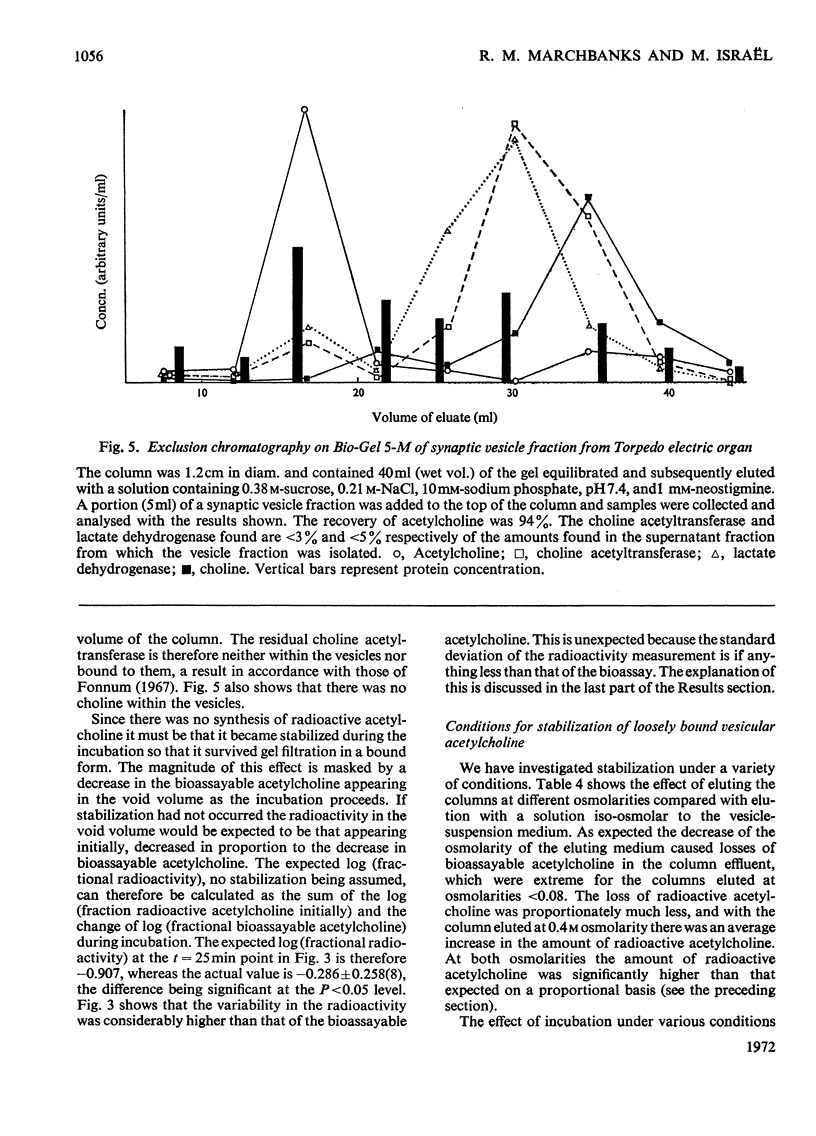
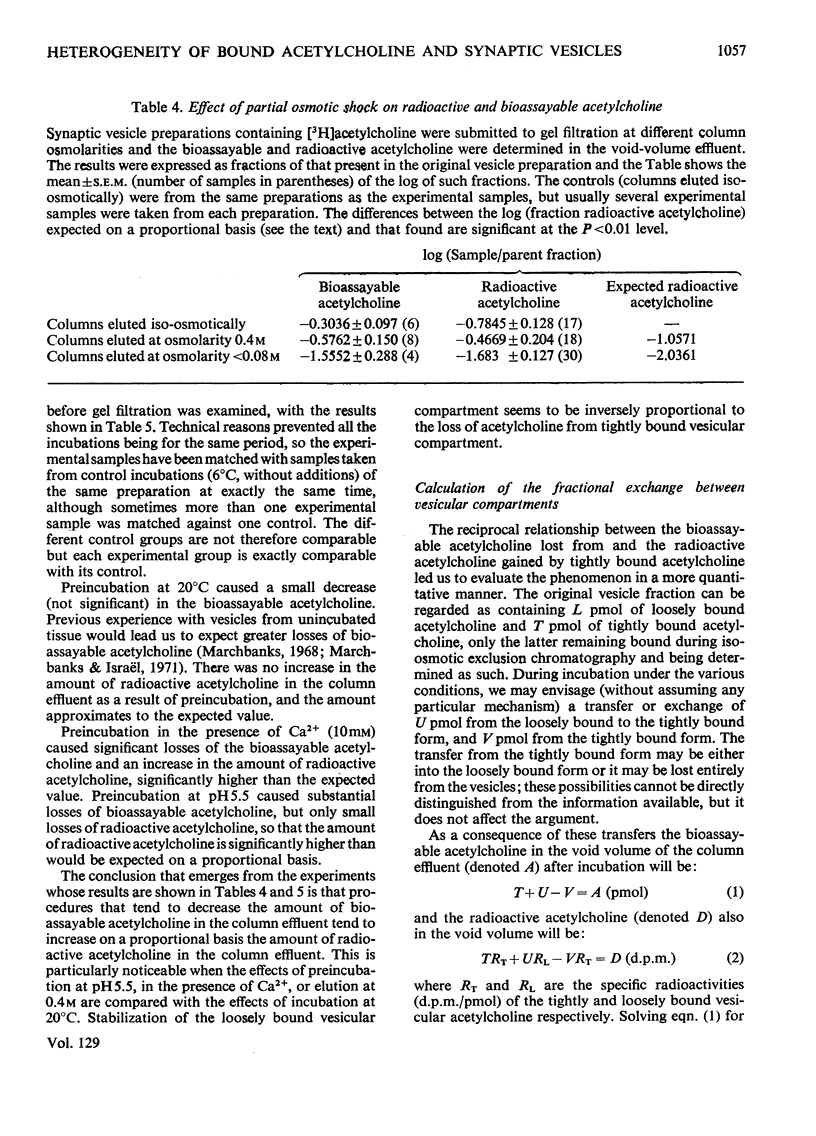

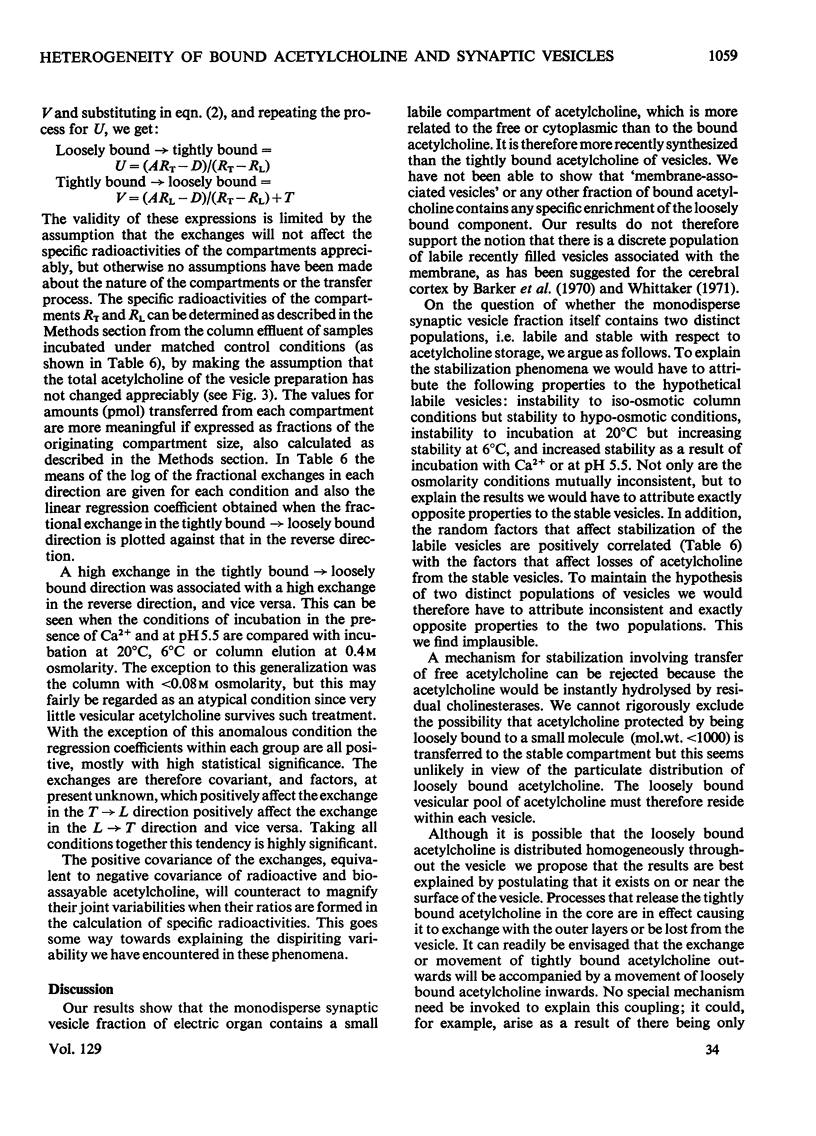
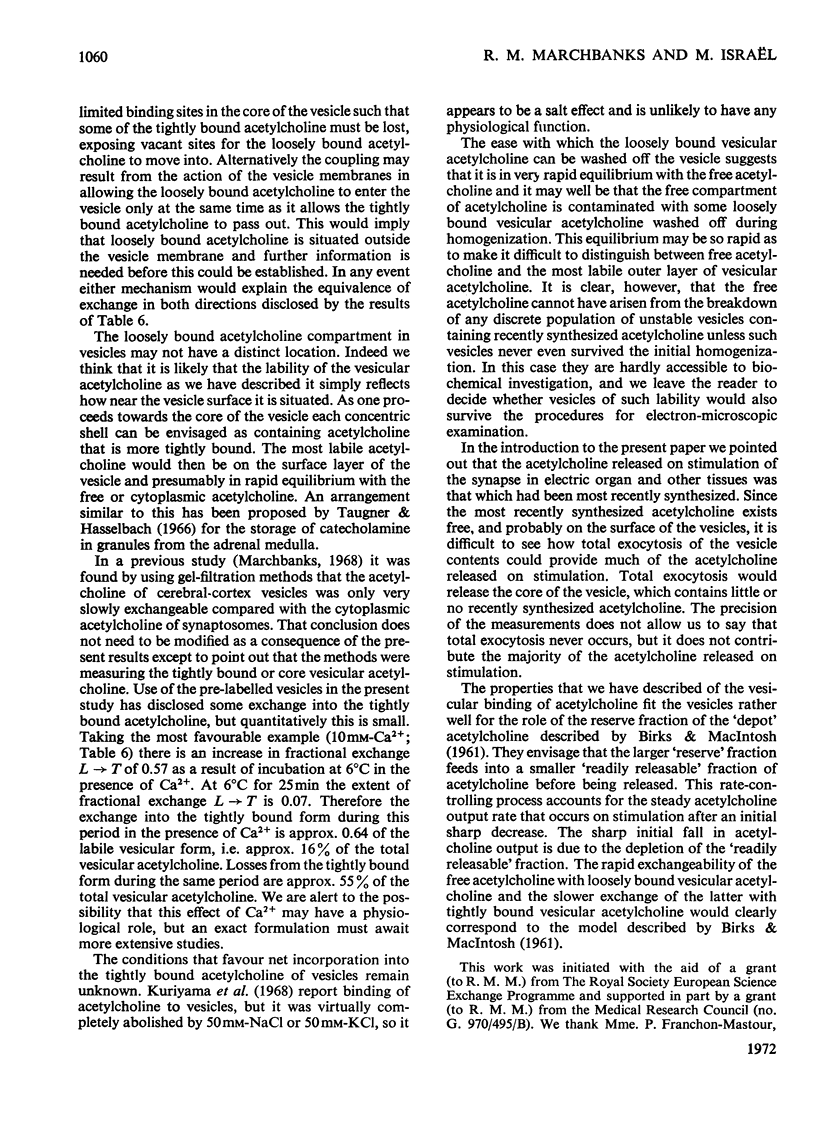
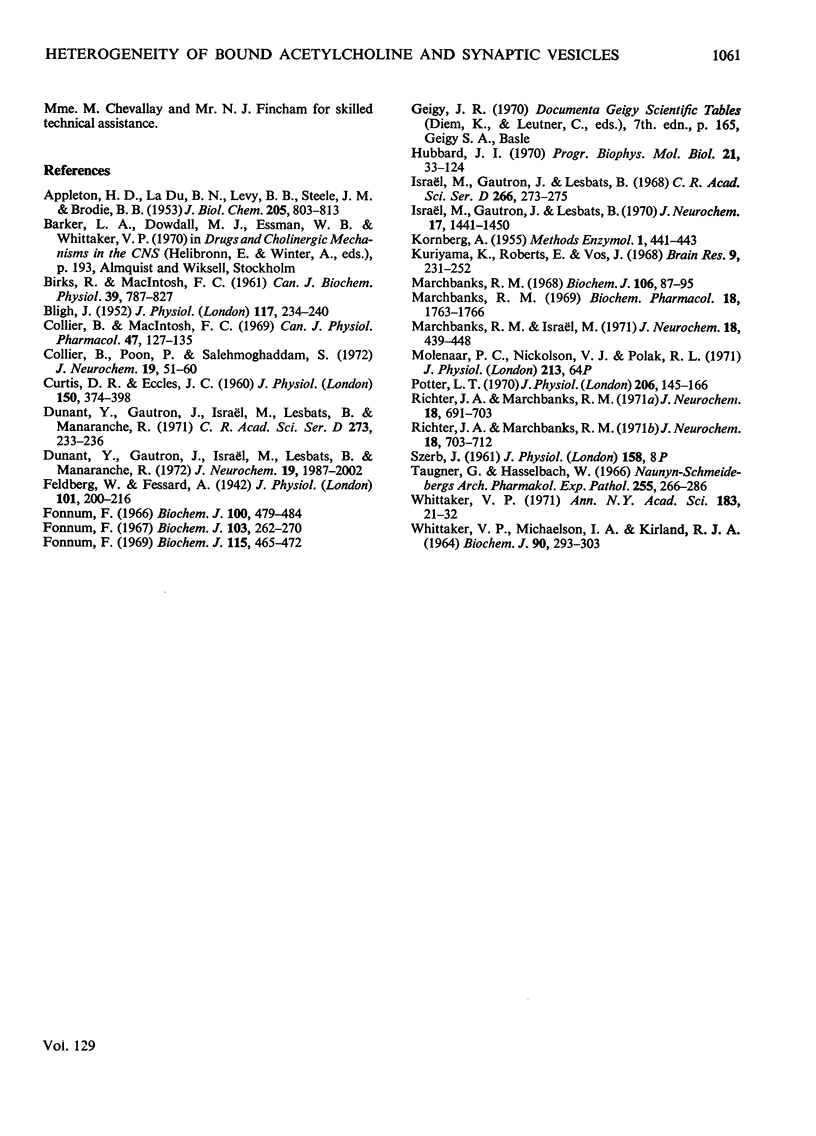
Selected References
These references are in PubMed. This may not be the complete list of references from this article.
- APPLETON H. D., LA DU B. N., Jr, LEVY B., STEELE J. M., BRODIE B. B. A chemical method for the determination of free choline in plasma. J Biol Chem. 1953 Dec;205(2):803–813. [PubMed] [Google Scholar]
- BLIGH J. The level of free choline in plasma. J Physiol. 1952 Jun;117(2):234–240. doi: 10.1113/jphysiol.1952.sp004743. [DOI] [PMC free article] [PubMed] [Google Scholar]
- CURTIS D. R., ECCLES J. C. Synaptic action during and after repetitive stimulation. J Physiol. 1960 Feb;150:374–398. doi: 10.1113/jphysiol.1960.sp006393. [DOI] [PMC free article] [PubMed] [Google Scholar]
- Collier B., Poon P., Salehmoghaddam S. The formation of choline and of acetylcholine by brain in vitro. J Neurochem. 1972 Jan;19(1):51–60. doi: 10.1111/j.1471-4159.1972.tb01252.x. [DOI] [PubMed] [Google Scholar]
- Dunant Y., Gautron J., Israël M., Lesbats B., Manaranche R. Effet de la stimulation de l'organe électrique de la torpille sur les "compartiments libre et lié" d'acétylcholine. C R Acad Sci Hebd Seances Acad Sci D. 1971 Jul 12;273(2):233–236. [PubMed] [Google Scholar]
- Dunant Y., Gautron J., Israël M., Lesbats B., Manaranche R. Les compartiments d'acetylcholine de l'organe electrique de la torpille et leurs modifications par la stimulation. J Neurochem. 1972 Aug;19(8):1987–2002. doi: 10.1111/j.1471-4159.1972.tb01488.x. [DOI] [PubMed] [Google Scholar]
- Feldberg W., Fessard A. The cholinergic nature of the nerves to the electric organ of the Torpedo (Torpedo marmorata). J Physiol. 1942 Aug 18;101(2):200–216. doi: 10.1113/jphysiol.1942.sp003975. [DOI] [PMC free article] [PubMed] [Google Scholar]
- Fonnum F. A radiochemical method for the estimation of choline acetyltransferase. Biochem J. 1966 Aug;100(2):479–484. doi: 10.1042/bj1000479. [DOI] [PMC free article] [PubMed] [Google Scholar]
- Fonnum F. Radiochemical micro assays for the determination of choline acetyltransferase and acetylcholinesterase activities. Biochem J. 1969 Nov;115(3):465–472. doi: 10.1042/bj1150465. [DOI] [PMC free article] [PubMed] [Google Scholar]
- Fonnum F. The 'compartmentation' of choline acetyltransferase within the synaptosome. Biochem J. 1967 Apr;103(1):262–270. doi: 10.1042/bj1030262. [DOI] [PMC free article] [PubMed] [Google Scholar]
- Hubbard J. I. Mechanism of transmitter release. Prog Biophys Mol Biol. 1970;21:33–124. [PubMed] [Google Scholar]
- Israel M., Gautron J., Lesbats B. Isolement des vésicules synaptiques de l'organe électrique de la Torpille et localisation de l'acétylcholine à leur niveau. C R Acad Sci Hebd Seances Acad Sci D. 1968 Jan 15;266(3):273–275. [PubMed] [Google Scholar]
- Israël M., Gautron J., Lesbats B. Fractionnement de l'organe electrique de la torpille: localisation subcellulaire de l'acetylcholine. J Neurochem. 1970 Oct;17(10):1441–1450. doi: 10.1111/j.1471-4159.1970.tb00511.x. [DOI] [PubMed] [Google Scholar]
- Kuriyama K., Roberts E., Vos J. Some characteristics of binding of gamma-aminobutyric acid and acetylcholine to a synaptic vesicle fraction form mouse brain. Brain Res. 1968 Jul;9(2):231–252. doi: 10.1016/0006-8993(68)90232-1. [DOI] [PubMed] [Google Scholar]
- Marchbanks R. M. Exchangeability of radioactive acetylcholine with the bound acetylcholine of synaptosomes and synaptic vesicles. Biochem J. 1968 Jan;106(1):87–95. doi: 10.1042/bj1060087. [DOI] [PMC free article] [PubMed] [Google Scholar]
- Marchbanks R. M., Israël M. Aspects of acetylcholine metabolism in the electric organ of Torpedo marmorata. J Neurochem. 1971 Mar;18(3):439–448. doi: 10.1111/j.1471-4159.1971.tb11971.x. [DOI] [PubMed] [Google Scholar]
- Marchbanks R. M. The conversion of 14C-choline to 14C-acetylcholine in synaptosomes in vitro. Biochem Pharmacol. 1969 Jul;18(7):1763–1766. doi: 10.1016/0006-2952(69)90165-8. [DOI] [PubMed] [Google Scholar]
- Potter L. T. Synthesis, storage and release of [14C]acetylcholine in isolated rat diaphragm muscles. J Physiol. 1970 Jan;206(1):145–166. doi: 10.1113/jphysiol.1970.sp009003. [DOI] [PMC free article] [PubMed] [Google Scholar]
- Richter J. A., Marchbanks R. M. Isolation of ( 3 H) acetylcholine pools by subcellular fractionation of cerebral cortex slices incubated with ( 3 H) choline. J Neurochem. 1971 May;18(5):705–712. doi: 10.1111/j.1471-4159.1971.tb12000.x. [DOI] [PubMed] [Google Scholar]
- Richter J. A., Marchbanks R. M. Synthesis of radioactive acetylcholine from ( 3 H)choline and its release from cerebral cortex slices in vitro. J Neurochem. 1971 May;18(5):691–703. doi: 10.1111/j.1471-4159.1971.tb11999.x. [DOI] [PubMed] [Google Scholar]
- Taugner G., Hasselbach W. Uber den Mechanismus der Catecholamin-Speicherung in den "chromaffinen Granula" des Nebennierenmarks. Naunyn Schmiedebergs Arch Pharmakol Exp Pathol. 1966;255(3):266–286. [PubMed] [Google Scholar]
- Whittaker V. P., Michaelson I. A., Kirkland R. J. The separation of synaptic vesicles from nerve-ending particles ('synaptosomes'). Biochem J. 1964 Feb;90(2):293–303. doi: 10.1042/bj0900293. [DOI] [PMC free article] [PubMed] [Google Scholar]
- Whittaker V. P. Origin and function of synaptic vesicles. Ann N Y Acad Sci. 1971 Sep 15;183:21–32. doi: 10.1111/j.1749-6632.1971.tb30739.x. [DOI] [PubMed] [Google Scholar]


